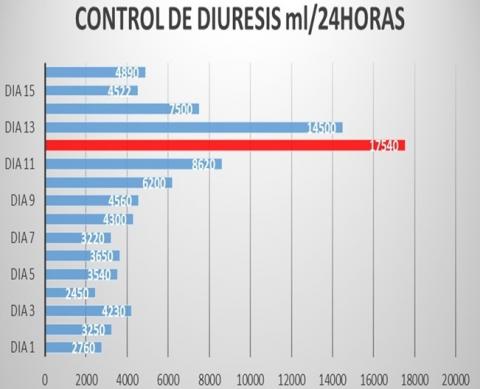Usted está aquí
Peruvian Journal of Neurosurgery
Central diabetes insipidus post-ventriculostomy. case report
LIZERT AQUINO-FABIÁN, ERMITAÑO BAUTISTA C.
Abstract (Spanish) ||
Full Text ||
PDF (Spanish)
ABSTRACT
Introduction: Diabetes insipidus is a rare complication in cerebral vascular pathology. Although its presentation is associated with surgery for pituitary tumors, few cases have been reported after the evacuation of cerebral hemorrhages.
Clinical Case: A 54-year-old male patient was admitted with a clinical picture of intense holocranial headache, Glasgow Coma Scale 8. A brain tomography (TEM) showed ventricular and basal ganglia hemorrhage. She underwent surgery, placing an external ventricular shunt, and was then transferred to the Intensive Care Unit (ICU). The control tomography showed signs of ischemia in the territory of the anterior cerebral artery. Laboratory tests showed severe hypernatremia, polyuria, hypovolemia, and alterations in urinary osmolarity, which is why she was diagnosed with central diabetes insipidus and received treatment with vasopressin, presenting a favorable evolution.
Conclusion: Central diabetes insipidus occurs due to damage to the osmoreceptors of the hypothalamus. Its incidence after brain hemorrhage evacuation surgeries is low. It is recommended to carry out exhaustive monitoring of the internal environment from the moment these patients are admitted to the Neurocritical ICU
Keywords: Diabetes Insipidus, Hypernatremia, Polyuria, Brain, Intensive Care Units. (Source: MeSH NLM)



